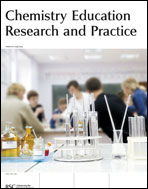Interactive lecture demonstrations: a tool for exploring and enhancing conceptual change
Abstract
Interactive Lecture Demonstrations (ILD) are a student centered teaching method, in which students are asked to predict the outcome of an experiment, observe the outcome, and discuss it with respect to their former expectations. The demonstrations are designed to contradict students’ known misconceptions, generate cognitive conflict and dissatisfaction with the existing conception, and promote a process of conceptual change. An ILD based course was used to explore the effect of cognitive conflict on the conceptual change process, and the role of student interactivity in this process. Three major levels of conceptual change were identified: high – students who remember the outcome of the demonstration, and explain it using the consensus model; medium – students who can recall the outcome, are dissatisfied with their alternative model, but do not switch to the consensus model; and low – no meaningful recollection of the outcome, and no change in the alternative model. A multiple-choice test based on the lecture demonstration was given to two groups, one of which only observed the demonstrations, without predicting and discussing. We found a significant difference between the groups, with an obvious drop in students’ ability to recall the outcome of the demonstrations in the non-interactive group. [Chem. Educ. Res. Pract., 2007, 8 (2), 197-211]
- This article is part of the themed collection: The Laboratory in Science Education: The State of the Art

 Please wait while we load your content...
Please wait while we load your content...